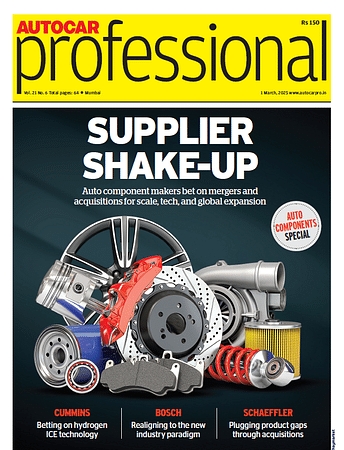Why India's road transport continues to outpace railways in freight movement
Analysis from S&P Global Mobility suggests that the railways will likely only achieve a 24% share by 2030—a far cry from the target.
In the corridors of India's logistics industry, a quiet but significant situation is unfolding—a contest between the country's vast railway network and its sprawling road infrastructure. The stakes are high: by 2031, the Indian government, looking to bring down overall logistic cossts, aims to boost the share of freight transported by rail from 18.2% in 2022 to an ambitious 45%. But S&P Global Mobility is of the opinion that this aspiration may be more of a of a dream than reality.
Analysis from S&P Global Mobility suggests that the railways will likely only achieve a 24% share by 2030—a far cry from the target. Meanwhile, road transport, which currently dominates the sector with a 70% share, is projected to drop only slightly to 64% over the same period.
This forecast emerges against the backdrop of India’s logistics industry, a behemoth valued at USD 250 billion, growing at a steady 6-7% annual rate. It’s an industry poised for transformation, yet deeply rooted in its reliance on road transport. The reasons are manifold. Road freight, as S&P Global Mobility's senior analyst Tabish Md Jan explains, has the unparalleled advantage of serving both last-mile and long-haul needs. "Road transport saves on packing costs, facilitates tracking, and ensures timely deliveries—benefits that resonate across a diverse range of sectors," Jan noted during a recent webinar on India's Medium and Heavy Commercial Vehicles (MHCV) market.
India's rapid expansion of road infrastructure—spanning national highways, state roads, and local thoroughfares—further cements road transport's dominance. With new roads and bridges sprouting up across the country, the stage is set for even smoother freight movements. Jan contrasts this with the railways' uphill battle: "For rail to increase its share, it will require different types of wagons, dedicated railway tracks, large number of locos, bridges, and increased speeds. But the path for trucking is already clear."
The Indian government's substantial infrastructure investments underscore this dynamic. In her July budget address, the Finance Minister Nirmala Sitharaman highlighted the Rs 11,11,111 crore allocation for capital expenditure, a sum that amounts to 3.4% of the nation's GDP. This investment is set to fuel key infrastructure sectors—roads, railways, airports, ports, and power plants—creating ripe opportunities for private sector involvement in large-scale projects.
Sitharaman also announced measures designed to spur state-level infrastructure spending, including Rs 1.5 lakh crore in long-term, interest-free loans. Additionally, the government plans to enhance private sector investment through viability gap funding and market-based financing networks, while expanding the Pradhan Mantri Gram Sadak Yojana (PMGSY) to connect 25,000 rural habitations with all-weather roads.
In this evolving landscape, Jan pointed to promising growth projections for India's trucking and bus market. S&P Mobility graph forecast that trucks and buses over six tons are expected to grow from 480,000 units in 2024 to 500,000 by 2026. Within this, the heavy-duty truck segment is poised to expand at a robust CAGR of 10.3% during FY2021-2026, while medium trucks are expected to grow by 9.1%. The bus segment is set to soar, with a remarkable 39.7% CAGR, driven by macroeconomic factors such as overall economic growth, the infrastructure push, and the rise of e-commerce.
While the road ahead for India's railways might be fraught with challenges, the nation's roads are primed to continue their dominance, carving out new pathways for the country’s booming logistics sector.
RELATED ARTICLES
Skoda Ready to Go Solo for India EV Business as Partner Search Stalls
The company has reportedly talked to Mahindra & Mahindra, Tata Motors and JSW Group for partnering on its EV business in...
Mercedes-Benz Unveils New CLA in Rome, Claims Most Efficient Model Ever
The automotive giant presented its latest CLA model in Rome, featuring technological innovations and sustainability impr...
Qualcomm Joins KPIT, ZF as Investor in Qorix
Qualcomm Technologies has joined as a strategic minority shareholder in Qorix GmbH, partnering with KPIT Technologies L...






 20 Aug 2024
20 Aug 2024
 6433 Views
6433 Views





 Sarthak Mahajan
Sarthak Mahajan


 Angitha Suresh
Angitha Suresh


